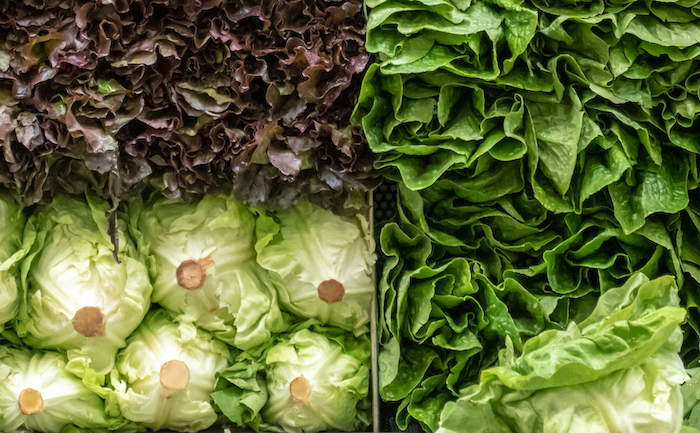Consumer Reports tested 284 samples of leafy greens purchased from multiple retailers and found six of them were contaminated with Listeria monocytogenes, according to a new report from the magazine. One of these Listeria strains was linked to two illnesses.
The samples, which included packaged, pre-washed greens and loose heads or bunches, were purchased from a variety of stores including Acme, Costco, Hannaford, and Whole Foods. Four of the samples that tested positive for Listeria were loose heads or bunches, two were prepackaged.

The study’s authors, who describe the test a market snapshot, say that while the sample size of the study is not large enough to draw conclusions about specific brands or retailers, the test shows that in terms of food safety, the leafy greens industry has more work to do.
The Consumer Reports Study
Consumer Reports purchased all samples from stores in Connecticut, New Jersey, and New York between June 3 and June 19, 2019. Tests results showed the following samples were contaminated with Listeria:
- Unbranded, unbagged red leaf lettuce purchased at Acme.
- Boskovich Farms “triple washed” bagged spinach purchased at Costco.
- Unbranded, unbagged spinach purchased at Hannaford.
- Nature’s Place “triple-washed” Organic Spinach Spring Mix purchased at a Hannaford.
- Unbranded, unbagged green leaf lettuce purchased at Whole Foods.
- Lancaster Farm unbagged green kale purchased at Whole Foods.
The Nature’s Place brand “triple-washed” Organic Spinach Spring Mix purchased at a Hannaford was the sample that tested positive for a Listeria strain linked to at least two illnesses but it is not known if those two people ate the salad, according to Consumer Reports. When contacted by the magazine, a Hannaford spokesperson said the company was not aware of any illnesses.
Consumer Reports contacted the Centers for Disease Control and Prevention (CDC) and the U.S. Food and Drug Administration (FDA) with the findings of their study. The FDA then conducted an inspection of the plant where the salad is produced. The magazine asked the FDA about results if follow-up tests from the inspection but did not hear back from the agency before publication. Hannford told Consumer Reports that the agency did not find anything of concern during the inspection and that the supplier has its own testing program.
What is Listeria and How Does it Get on Food?
Listeria monocytogenes is one of the most deadly foodborne pathogens. It occurs naturally in the environment but when it contaminates food, the result can be dire. Almost 100 percent of these infections require treatment in a hospital setting and between 20 percent and 30 percent of all cases of listeriosis end in fatality.
Some people, including small children, seniors, people with compromised immune systems and pregnant women, are at heightened risk for listeriosis. Among pregnant women, these infections can cause miscarriage, stillbirth, premature delivery and infection of newborns. In fact, women who are pregnant women are 10 times more likely than the general population to contract a Listeria infection. For Hispanic women who are pregnant, the risk is 24 times higher.
Hardier than other bacteria, Listeria can survive freezing, drying and other adverse conditions such as high concentrations of salt, alcohol, acid and bile. Not only can Listeria survive these harsh environments, in refrigerated temperatures which slow the growth of most foodborne bacteria, Listeria thrives.
It’s also pretty stealthy. Once ingested, Listeria uses its adaptability to hide from the immune system. In pregnant women, it hides in the placenta where, protected from the immune system, it multiplies before invading the rest of the body, University of California, Berkeley researchers found.
What Does This Mean for Consumers?
Listeria is not the only bacteria that poses a food safety risk with leafy greens and other fresh produce. Recent outbreaks have also been linked to produce contaminated with E. coli and Salmonella. In fact, about half of all food poisoning outbreaks are linked to fresh produce. And because these illnesses can be serious, sometimes fatal, high-risk groups should avoid eating raw produce and opt for cooked.
For most people, however, the health benefits of adding fresh produce to the daily diet outweigh the risks, health officials say. But consume wisely. Eat fresh produce at home in a timely fashion and, as Consumer Reports suggests, if you’d like to be extra cautious, avoid eating raw leafy greens at restaurants where 85 percent of leafy green outbreaks occur.
